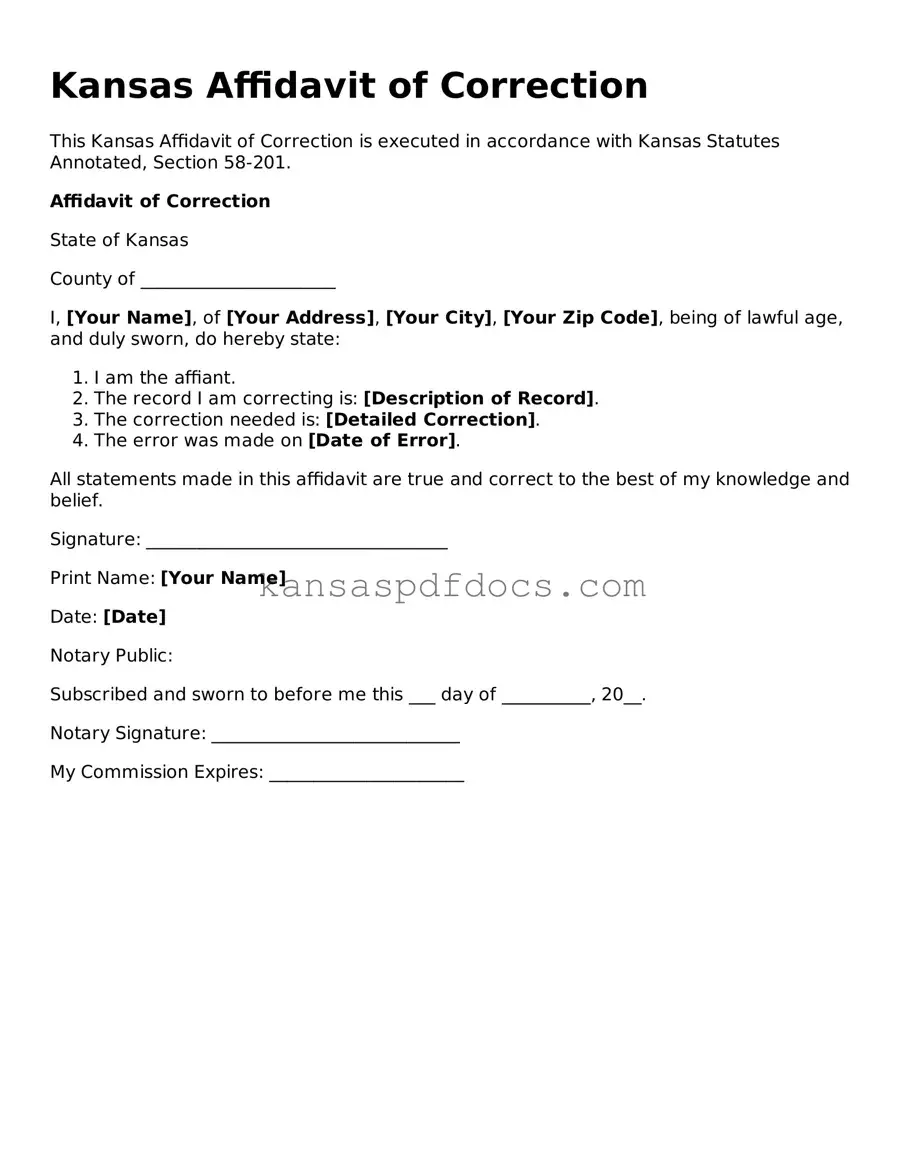The Kansas Affidavit of Correction form plays a crucial role in the process of rectifying errors found in public records. When inaccuracies arise—whether in property descriptions, names, or other vital details—this form serves as a formal declaration to amend those discrepancies. It is essential for individuals and entities to understand that filing this affidavit is not merely a procedural step; it is a significant action that can impact legal rights and property ownership. The form requires specific information, including the original document's details and the nature of the correction needed. Additionally, the affidavit must be signed and notarized, ensuring its validity and acceptance by relevant authorities. By utilizing this form, individuals can effectively communicate their intent to correct errors, thereby safeguarding their interests and maintaining the integrity of public records.
